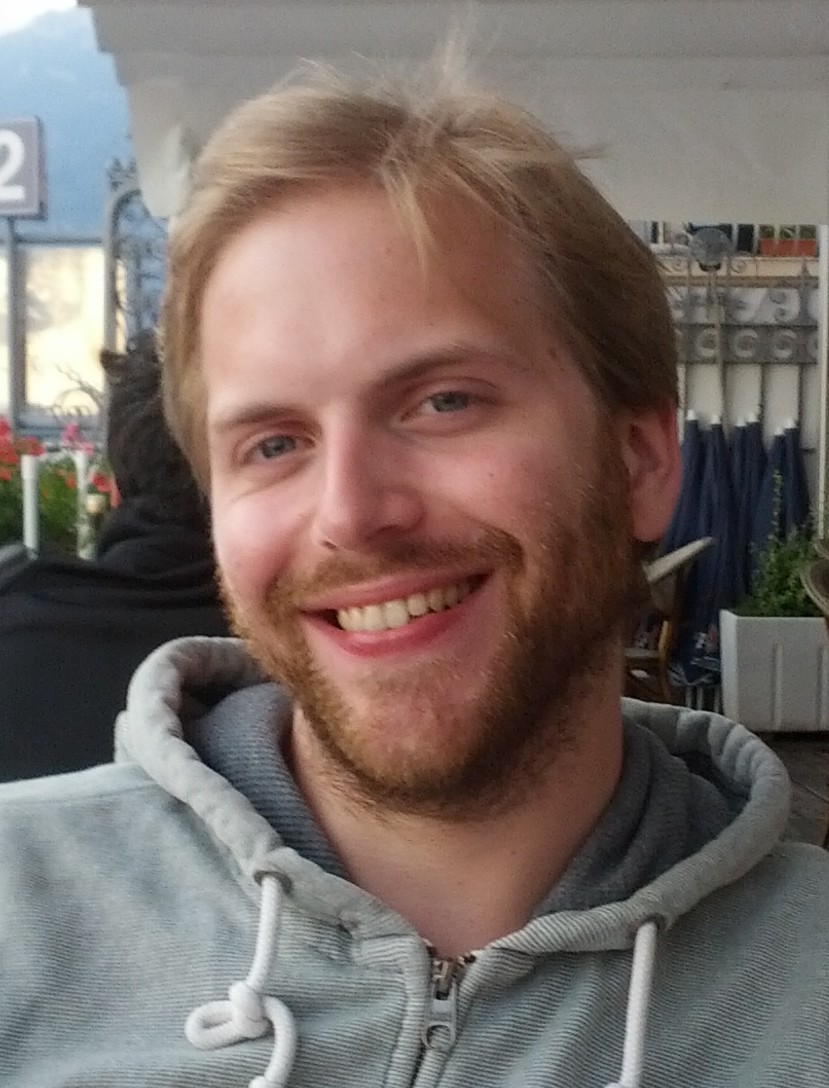From ATLAS Around the World: Triggers (and dark) matter
27 July 2015 | By
To the best of our knowledge, it took the Universe about 13.798 billion years (plus or minus 37 million) to allow funny looking condensates of mostly oxygen, carbon and hydrogen to ponder on their own existence, the fate of the cosmos and all the rest. Some particularly curious specimens became scientists, founded CERN, dug several rings into the ground near Geneva, Switzerland, built the Large Hadron Collider in the biggest ring, and also installed a handful of large detectors along the way. All of that just in order to understand a bit better why we are here in the first place. Well, here we are!

CERN was founded after World War II as a research facility dedicated to peaceful science (in contrast to military research). Germany is one of CERN’s founding members and it is great to be a part of it. Thousands of scientists are associated with CERN from over 100 countries, including some nations that do not have the most relaxed diplomatic relationships with each other. Yet this doesn’t matter at CERN, as we are working hand-in-hand for the greater good of science and technology.
In the ATLAS collaboration, Germany has institutes from 14 different cities contributing to one of the largest and most complex detectors ever built. My institute, the Kirchhoff-Institut für Physik (KIP) in Heidelberg, was (and is) involved in the development and operation of the trigger mechanism that selects the interesting interactions from the not so interesting ones. Furthermore, we are doing analyses on the data to confirm the Standard Model of Particle Physics or – better yet – to find hints of excess events that point to dark matter particles (although we are still waiting for that…).
But let’s start with the trigger. The interaction rate (that is the rate at which bunches of LHC protons collide within the ATLAS detector) is way too high to save every single event. That is why a selection process is needed to decide which events to save and which to let go. This trigger mechanism is split up into several stages; the first of which handles such high rates that it needs to be implemented using custom hardware, as commercial PCs are not fast enough.
This first stage (also called the level-1 trigger) is what we work on here at KIP. For instance, together with a fellow student, I took care of one of the first timing checks after the long shutdown. This was important, because we wanted to know if the extensive maintenance that started after the Run 1 (wherein we had personally installed new hardware) had somehow changed the timing behaviour of the level-1 trigger. Having a timed system is crucial, since if you are off by even a few nanoseconds, your trigger starts misbehaving and you might miss Higgs bosons or other interesting events.

In order to determine the timing of our system we used “splash” events. Instead of collisions at the centre of the detector, a “splash” is an energetic spray of a huge number of particles that comes from only one direction (more information on splashes here). They are great for timing the system, because they light up the entire detector like a Christmas tree. Also, they came from the first LHC beam since Run 1 – so it was the first opportunity to see the detector at work. This work was intense and cool. The beam splashes were scheduled over Easter, but we did not care. We gladly spent our holiday together in the ATLAS control room with other highly motivated people who sacrificed their long weekend for science. To see the first beams live in the control room after a long shutdown was a special experience. Extremely enthusiastic!
But of course, timing is not the only thing that has to be done. We also write the firmware for our hardware, code software (for instance, to monitor our system in real time), plan future upgrades (in both hardware and software) and do even more calibration. Each of these items is important for the operation of the detector and also very exciting to work on. I find it cool to know that the stuff I worked on helps keep ATLAS running.
Once we have the data – what do we do with it? Each student at KIP can choose which topic he or she wants to work on, yet the majority of us study processes that are related to electroweak interactions. This part of the Standard Model has become even more interesting after the discovery of the Higgs boson and has potential for the discovery of new physics. For example, dark matter. Many models predict dark matter interacts electroweakly, which is what I am working on. We can search for this in the data by looking for events from which we know that particles escaped the detector without interacting with it (leaving “missing transverse energy“; neutrinos do this too) and than comparing the results to models of electroweak coupling to dark matter. The discovery of dark matter would be awesome. The cosmological evidence for dark matter is convincing (for instance galactic rotation curvesor the agreement between observations from the Planck satellite and models such as ΛCDM). It is just a matter of finding it…
Going back to the beginning – literally. I am extremely curious to see what we – those funny-looking condensates of mostly oxygen, carbon and hydrogen – will find out about the Universe, its beginning, end, in-between, composition, geometry, behaviour and countless other aspects. And CERN, and especially the ATLAS collaboration, is a great environment in which to do so.
Manuel Geisler




